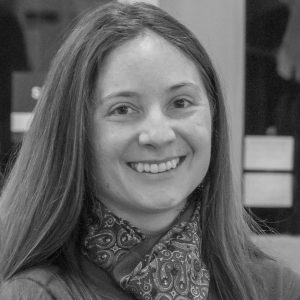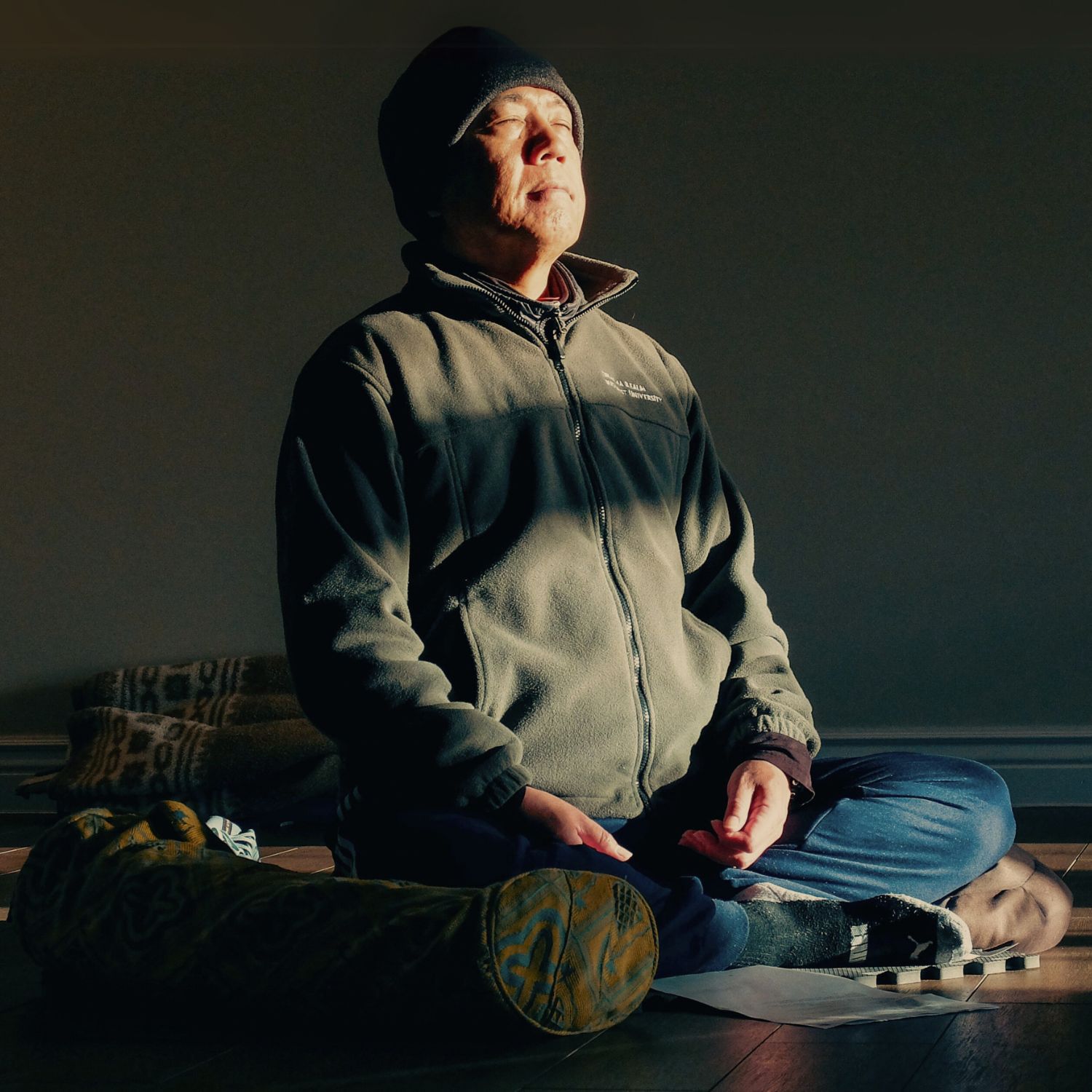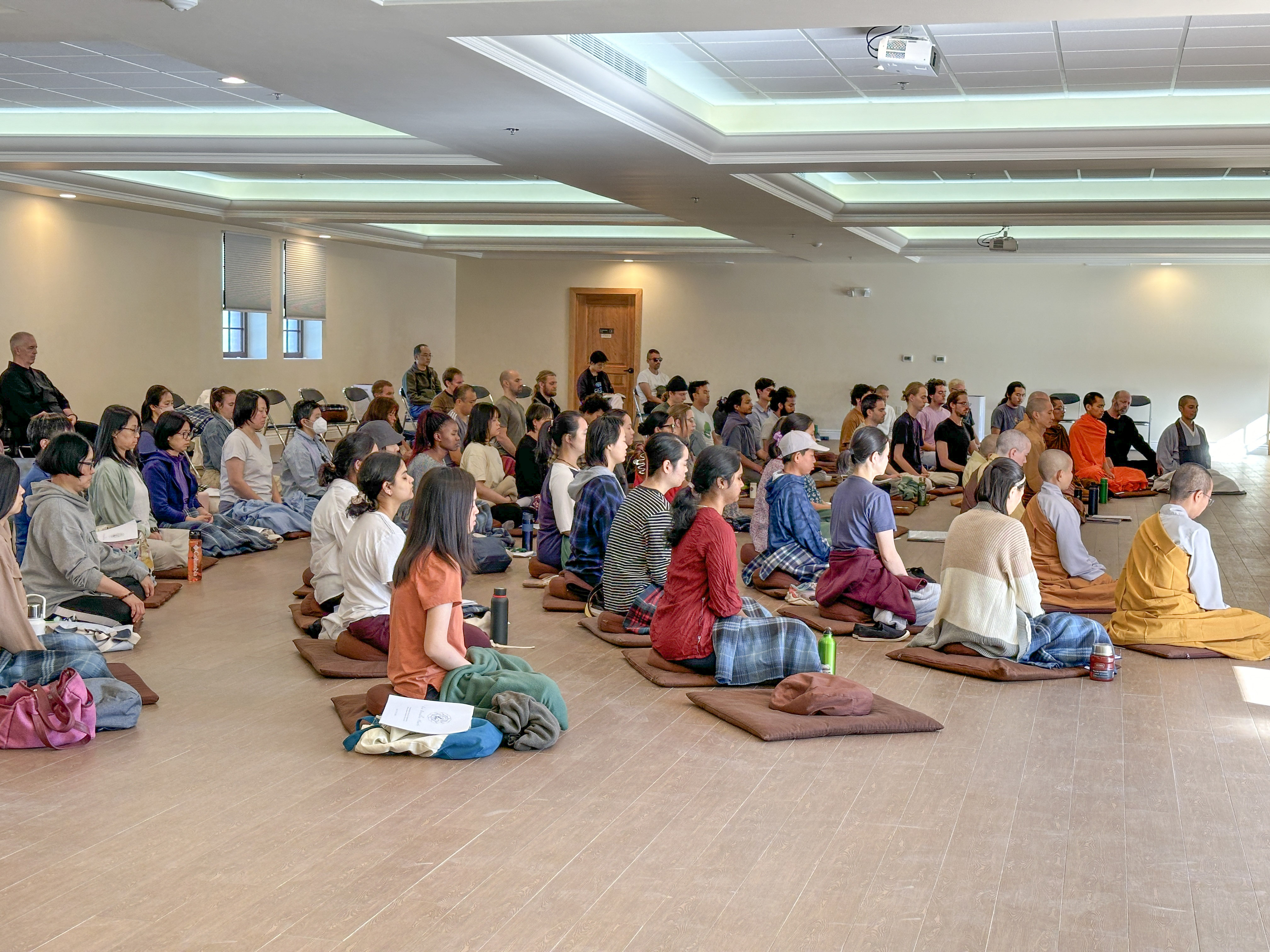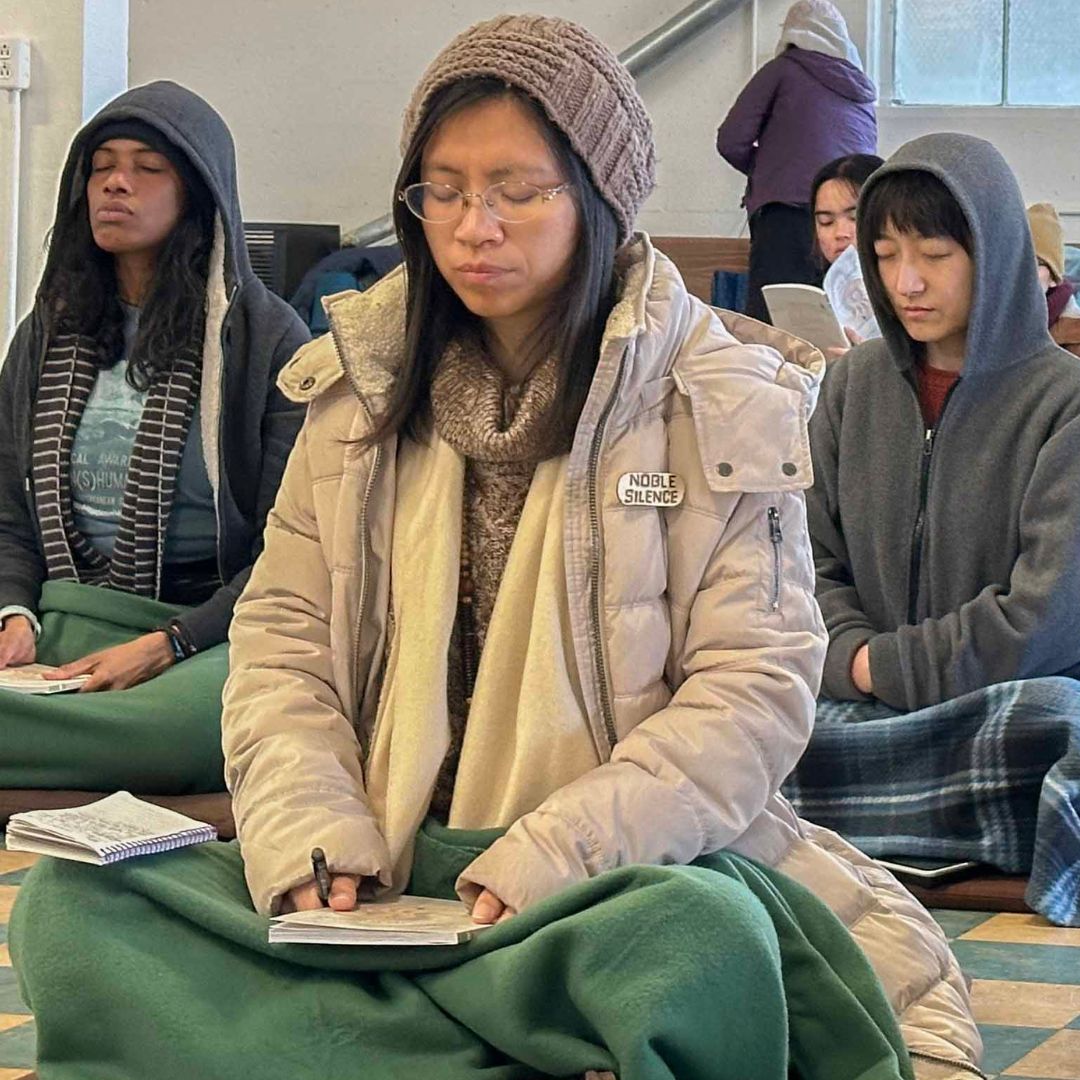
Planning a Contemplative Exercise Immersion: An Interview with Organizing Faculty
We spoke with DRBU faculty members Yihuan Shih and Lauren Bausch about the inspiration behind this year’s contemplative exercise immersion (CEI).
Where did the idea for this CEI come from? Where did the idea of sacred space come from?
Lauren: Yihuan, why don’t you take this question. It was Yihuan’s idea.
Yihuan: Well, it was not my idea, but I will put it this way. It’s really a result of all the conditions, of everything happening. All the conditions came together to cook up this idea, and I’m just one of those tiny conditions. When I say everything happening, I mean everything around the world, around me, physically, externally. People are losing their lives, losing their homes, losing their jobs, their safety nets. Many people have become homeless. They’re losing their loved ones. You cannot even say goodbye to your loved ones, to your parents, your wives or husbands, because COVID-19 patients are often hit quickly and pass away unexpectedly. And this in particular hit me hard, that you cannot say goodbye to your loved ones, because I couldn’t say goodbye to my dad. Also, I was trained as an end-of-life caretaker many years ago, so this hit me very hard. Externally, we’re losing so many things. And internally, people are also losing their hope, their faith, patience, and trust. So where should we go from here?
This is happening around the world but also around me. Many of my spiritual friends, my dharma friends, have this tremendous anxiety. Due to COVID-19, everyone is pushed to stay inside and many of my friends feel that they cannot settle or practice alone at home. They feel that they cannot practice unless they go to a physical way-place, a temple or a monastery like CTTB. I heard there was a layman who drove hours and hours from the South Bay, just wanting to get into CTTB, just wanting to go into the Buddha Hall to look at Guan Yin. He drove so many hours just for that purpose. And I also learned from another CTTB disciple that many people call CTTB every day. They ask: when will CTTB be open again? People really want to go back to the monastery, back to the temple, because they want to practice. So I’ve been pondering because of these things in front of me: what is the true meaning of way-place? I love the Vimalakīrti Sūtra, and that sutra provides a directional sign: What is a way-place? A way-place is not a physical temple, but those things we need to practice inwardly, spiritually.
Lauren: Yihuan told the new CEI committee in her proposal that many students are not at DRBU right now, so they don’t have a chan hall to practice in together. She thought it would be important to think through what a sacred space is, and how one would set up that space in order to practice. And so we thought: We need to do this because the students participating are all over the world, so how do we create this space together?
It makes a lot of sense that this was chosen for this particular semester and for this particular time. Since you bring up this idea of making space together, I’m wondering, how do we make sacred space as a community?
Lauren: Well the beautiful thing about sacred space is that it’s the field which we’re developing, which we’re cultivating. The buddha field (buddhakṣetra) is what it’s called in the Vimalakīrtinirdeśa Sūtra. The Chinese translates it as pure land, but in Sanskrit there’s actually no word for pure land. You have a purified buddha field (pariśuddhabuddhakṣetra) or the purification of a buddha field (buddhakṣetrapariśuddhi), but it’s always a field that we’re cultivating. So we have to ask: What is this field? Is it some far off place? Something outside of me? The text says no, it’s you. It’s your body, it’s your mind, it’s your senses. It’s everything you can create out of that. That’s your buddha field, your awakened field. The more we can see what’s happening inside of our field and create positive, bright, clear qualities in the mind, the more we can actually contribute to the sacred space of the world. It’s not just for my personal benefit; when we generate this field together, it’s powerful enough to have an effect on the way we live in community.
The CEI is about sacred space but also about the brahmavihāras. Why were the brahmavihāras chosen specifically as a focus?
Lauren: Friendliness, compassion, joy, and equanimity are among the many many things in the Vimalakīrtinirdeśa Sūtra that constitute a place of practice (=place of awakening, bodhimaṇḍa), and that constitute this field that we’re cultivating. The brahmavihāras are mentioned throughout the Vimalakīrtinirdeśa Sūtra, and generating these immeasurable qualities of mind sounded like something the world sorely needed at this moment, between the fires and the pandemic and all these disasters. We thought: How can we use these as a remedy for or an antidote to some of our afflictive qualities of mind, our anger, our jealousy–all these things that divide us, that keep us apart. How do we cultivate the brahmavihāras and use these to heal ourselves?
I’m curious: While the CEI was going on or even after the CEI, did things go the way you expected, or was there anything that came up, questions that were raised or issues that came up, that surprised you?
Lauren: It actually went better than I expected–I think–because the topic resonated so deeply with people. I’ve noticed in the classroom that students are particularly hard on themselves, and sometimes that kind of self-judgement makes it difficult for them to relate to others and forgive others, and to have wholesome relationships. This is about connecting with something very deep within, feeling the possibilities within our own selves, and exploring those directly, so the practice resonated and connected. This is something that, in a spiritual community, we have to be aware of. And we have to support each other to develop these qualities because it’s good for the individual and it’s good for everybody, for the collective, when we can be kind to ourselves and radiate these more boundless minds without getting caught up in our own obstacles and afflictions and in these awful things that actually are very constricting, tightening, and limiting. Because of our identification with the ego, with this smaller self, we’re constantly getting embroiled in these things and, before we know it, we lose sight of these more boundless, immeasurable qualities, which are the more natural state of the mind.
It seems like a lot of the practice is working on creating this internal sacred space that you can go to and use as a source of strength and resilience. But there’s also this emphasis on connecting with other people and bringing this space outwards. Especially now, when we’re unable to physically be with others, how do we strike this balance between inner and outer work?
Yihuan: I don’t know if I can answer this directly. If you allow me to go another route… I know this is going to end soon, COVID-19, shelter-in-place. Once we have a vaccine everything will go back to normal and then we will have physical contact, social lives. All that will come back right away. So I really treat this time, this special, extraordinary time, as a perfect moment for us to cultivate with ourselves and with very limited resources. I speak from my professional training, because I was trained as an experimental theater performer. I would like to mention a respectful Polish director named Grotowski. He was an international leader of experimental theater who became very famous in the 60’s. He established this theater called “Poor Theater.” Poor Theater emphasizes the actor’s technique and skill, meaning the actor cannot rely on those external things, such as lavish costumes, decor, lighting. Hence, “poor.” The actor can only rely on a very limited handful of props. And only through this “poor” style can the actor lay themselves bare, remove all the masks of daily life, and achieve a very serious and solemn act of revelation. I was reminded of this training now. I don’t have external resources; I can only rely on my cultivation skills, techniques that really go inside and pay attention to that inner awareness. I hope, after this CEI, that every student or practitioner, by using this energy, will come back to themselves, will use this as a prop, these boundless hearts and minds, and go inside and see if they can work with themselves. I don’t know if this answers your question but this is what I had in mind.


